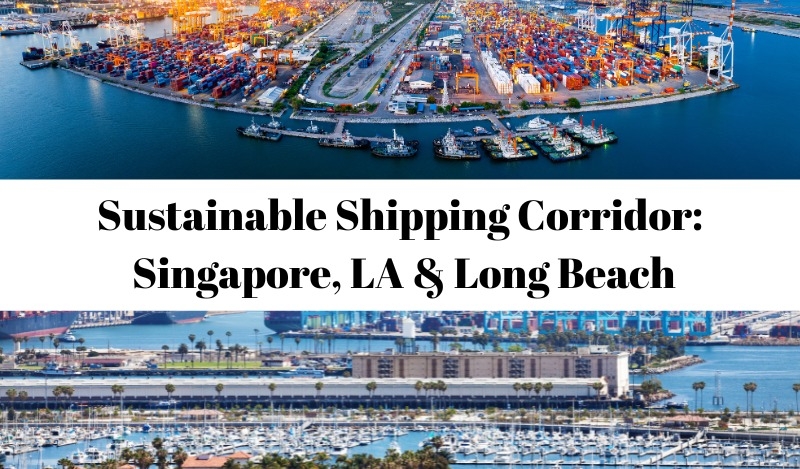News
Ports of Singapore, Los Angeles and Long Beach unveil Sustainable Digital Shipping Corridor

The Maritime and Port Authority of Singapore (MPA), along with the Port of Los Angeles and Port of Long Beach, has revealed a collaborative strategy for creating an environmentally friendly and digitally advanced shipping corridor spanning the Pacific Ocean. This initiative, announced at the 28th United Nations Climate Change Conference, underscores the commitment of the corridor partners to drive global efforts in digitalizing and decarbonizing the shipping industry. The partnership, formalized through a memorandum of understanding signed during Singapore Maritime Week in April 2023, aims to establish a green and digital shipping corridor linking the three major hub ports, with the support of C40 Cities.
Gene Seroka, Executive Director of the Port of Los Angeles, emphasizes the significance of the strategy document as the foundation for shaping the future of maritime shipping. The success of this endeavor relies on the dedication of the partnering ports and industry collaborators. Mario Cordero, CEO of the Port of Long Beach, highlights the importance of global collaboration in reducing emissions and promoting air quality. The trans-Pacific green shipping corridor is seen as a model that can be adopted by a broader network of seaports and supply chain companies worldwide.
The collaboration involves joint efforts between the ports, C40, and stakeholders in the fuel and maritime sectors to coordinate decarbonization, establish consensus on green shipping practices, enhance technology adoption, and leverage networks. Teo Eng Dih, Chief Executive of MPA, expresses enthusiasm for the growth of the partnership and emphasizes ongoing evaluations of digital solutions and eco-friendly fuel options along the route between Singapore and the San Pedro Bay Port Complex. Trials are anticipated, with the aim of scaling successful initiatives for broader adoption. A commissioned study will analyse trade flows and vessel traffic between Singapore, Los Angeles, and Long Beach, estimating the quantity of low and zero-emission fuels needed for this traffic. This study will guide implementation by identifying collaboration opportunities to advance the corridor's development. The partners plan to involve stakeholders from the shipping and fuel supply chains to welcome new participants into the corridor in 2024.